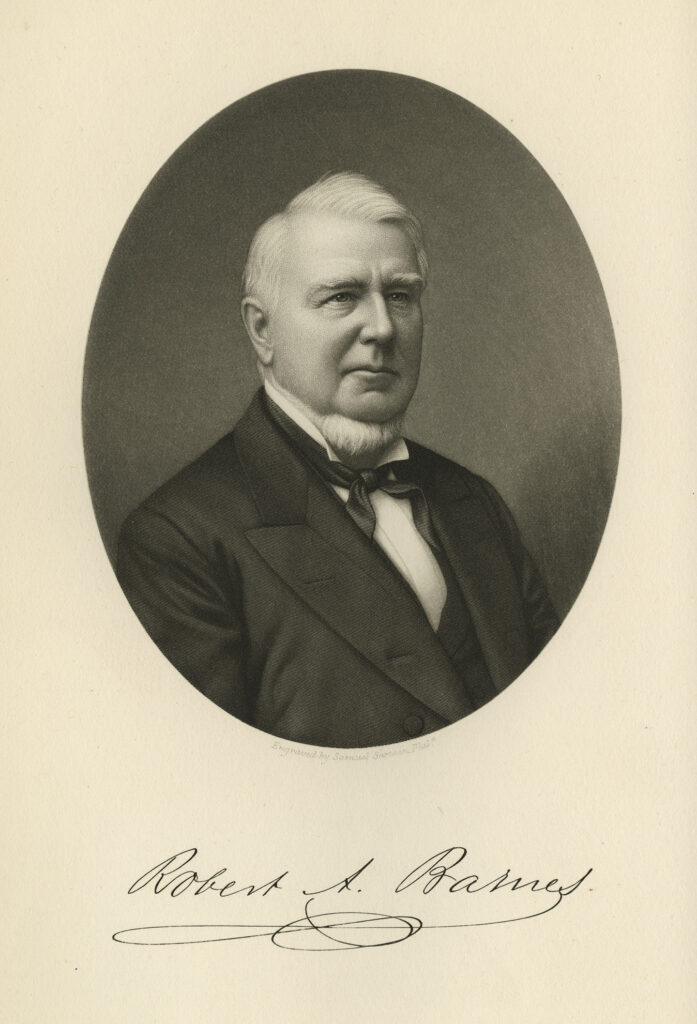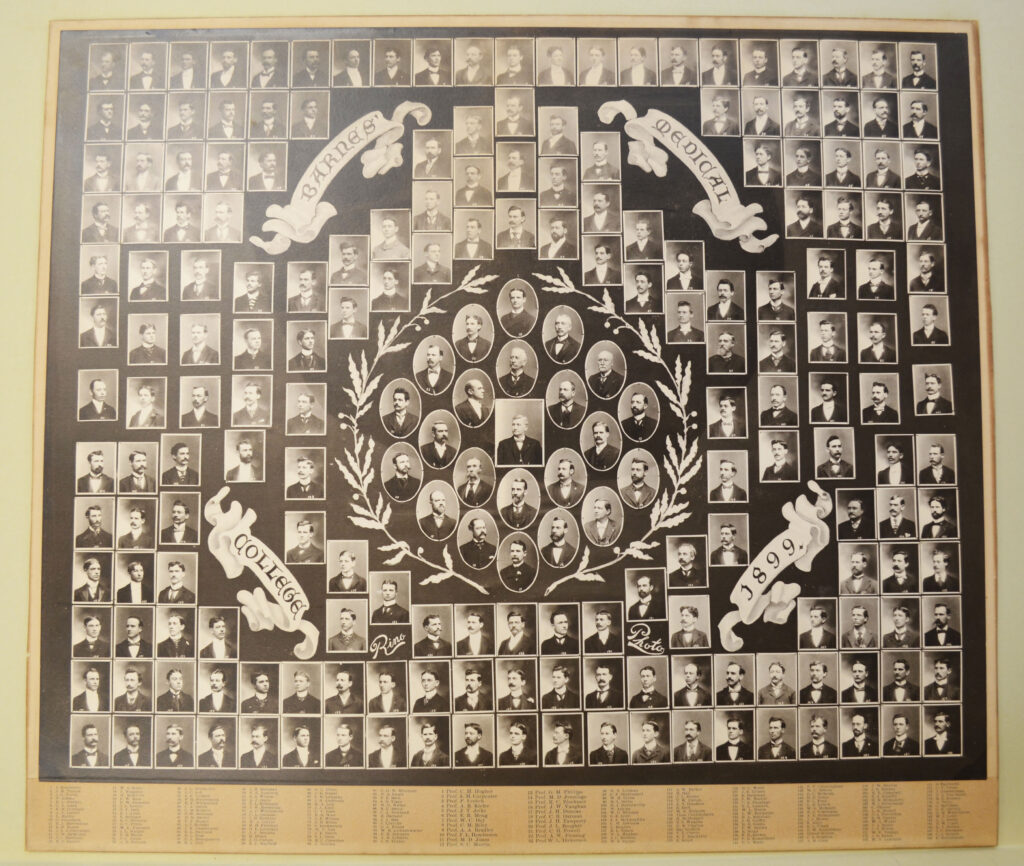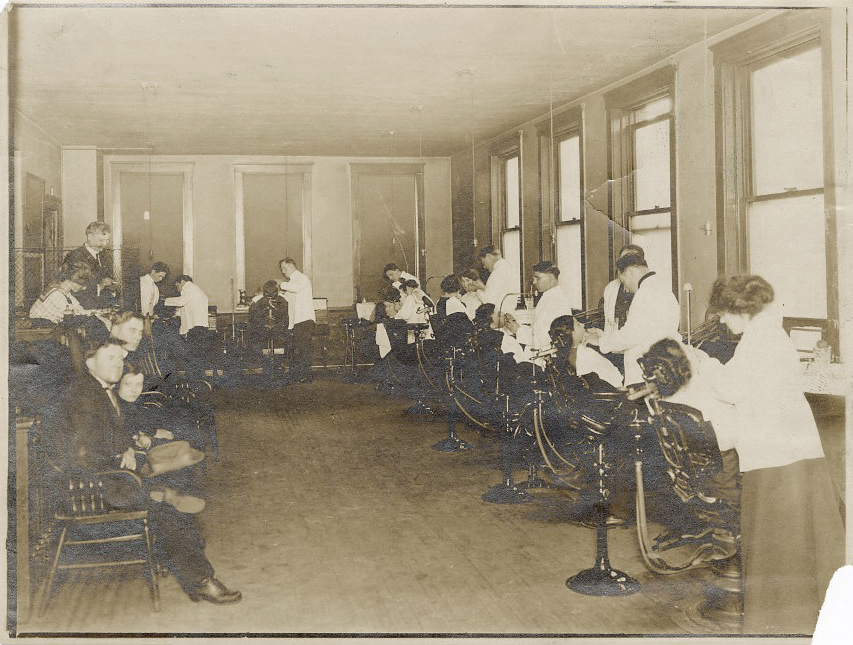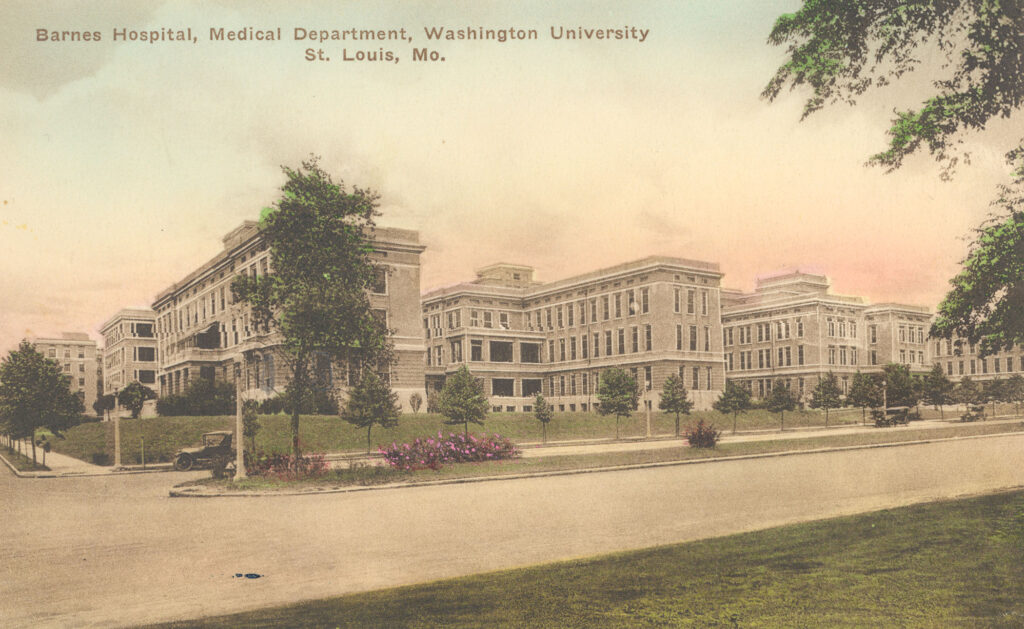When St. Louisans hear the name Barnes today, the century-old Barnes Hospital (now Barnes-Jewish Hospital) on Washington University’s medical campus might come to mind. But, before Barnes Hospital came into existence in 1914, St. Louisans would have known Barnes to be the largest medical school in downtown St. Louis.
Color postcard of the Barnes Medical College building, circa 1910, VC060-i060007,
Bernard Becker Medical Library Archives, Washington University in St. Louis.
The long-since-defunct Barnes Medical College was considerably larger in both physical size and student enrollment than Washington University’s medical school. Coincidentally, the university established its medical school in 1891, just one year before the Barnes Medical College opened in 1892. Located at the intersection of Garrison Avenue and Chestnut Street in downtown St. Louis, Barnes Medical College operated as one of the largest medical schools in the United States between 1892 and 1918.
Drawing of Robert A. Barnes, circa 1870, VC510-i01,
Bernard Becker Medical Library Archives, Washington University in St. Louis.
The present-day Barnes-Jewish Hospital and the former medical school were both named after the same person: Robert A. Barnes. Barnes was a wealthy St. Louis merchant and banker who left $250,000 of his estate for the construction of a new hospital for the city. By no coincidence, Barnes Medical College was founded in the same year as his death in 1892. The college administrators named their medical school after Barnes in hopes of securing the funding for the construction of a hospital to attach to their new classroom building. This plan did not materialize.
Composite portrait of Barnes Medical College class of 1899, VC142-i142004,
Bernard Becker Medical Library Archives, Washington University in St. Louis.
Despite the failed effort to acquire funds from the Barnes estate, Barnes Medical College flourished as one of the largest degree granting medical schools in the country by the end of the 1800s. As you can see in the Class of 1899 composite photograph above, there were nearly 200 graduates in the medical school that year. In addition to its large medical school, the institution also operated a dental college, a college of pharmacy, and a nurses’ training program. At its peak, there were over 400 graduates per year across all programs offered. However, the school became under financial duress in the early 1900s. Barnes Medical College united with American Medical College in 1912 to become National University. The St. Louis College of Physician and Surgeons also merged with this group in 1915. The school collapsed despite these mergers, and the last medical students graduated in 1918.
Interior view of the Barnes Dental College Infirmary, circa 1910, VC060-i060008,
Bernard Becker Medical Library Archives, Washington University in St. Louis.
Although Barnes Hospital and Washington University have been affiliated with each other for over 100 years, there was never at any point a similar relationship between the university and Barnes Medical College, nor was there ever a relationship between Barnes Hospital and Barnes Medical College either. Nevertheless, even though it has been over a hundred years since the Barnes Medical College closed, the Barnes name being associated with both the hospital and the defunct medical school continues to be a source of confusion today. Due to the thousands of medical degrees that were awarded to graduates of Barnes Medical College, decedents of those graduates often confuse the present-day hospital with the defunct medical school and/or with Washington University’s medical school.
Color postcard of Barnes Hospital, circa 1915, VC027-i027049,
Bernard Becker Medical Library Archives, Washington University in St. Louis.
Looking back, it is safe to say the trustees of the Robert Barnes estate made a wise decision to pass on investing in the Barnes Medical College and instead grew the estate through extraordinarily successful investments in the 1890s and early 1900s. These profitable speculations amounted to over one million dollars in the next 20 years, which enabled the construction of a state-of-the-art Barnes Hospital that opened in 1914. This hospital, which has been consistently deemed one of the best in the United States for the past century, continues to operate under the name Barnes-Jewish Hospital today.





